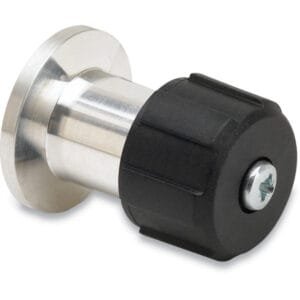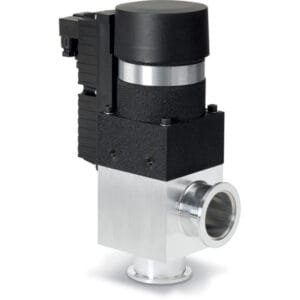ISO Flanged Kodial Glass Viewports for Clear Observation in Vacuum Systems
ISO Flanged Kodial Glass Viewports from TFM are designed to provide exceptional optical clarity and mechanical reliability for a broad range of industrial and scientific vacuum applications. These zero-length viewports combine the robustness of ISO flanges with the optical performance of Kodial glass, delivering a dependable solution for systems that demand precise visual access under vacuum.
Kodial glass, also known as alkali borosilicate 7056, is chosen for its superior thermal stability, minimal distortion, and excellent transmittance in the visible range. Each optical disc is fully annealed to reduce internal stress and enhance mechanical durability, making these viewports suitable for ellipsometry, emission monitoring, wavelength-dependent experiments, and general process observation.
The lens is permanently joined to the metal flange via a Kovar™ transition ring, ensuring thermal expansion compatibility and structural integrity even during bakeout cycles. The ISO-style flange, mated with fluorocarbon (FKM) o-rings, offers a reliable vacuum seal capable of withstanding temperatures up to 200°C.
Key Features of ISO Flanged Kodial Glass Viewports:
Clear, Distortion-Free Viewing: Large aperture with no internal voids, reducing the risk of particulate entrapment or optical distortion.
High-Purity Borosilicate Glass: Manufactured from Kodial 7056, offering outstanding clarity, low thermal expansion, and chemical resistance.
Stable ISO Flange Integration: Available in ISO-K or ISO-F flange styles for compatibility with clamp or bolt-type systems.
Robust Kovar Seal Design: Kovar metal transitions ensure secure bonding between the glass and flange under thermal cycling.
Vacuum and Thermal Ratings: Designed for use in high vacuum environments, and bakeable to 200°C with appropriate o-ring selection.
Common Applications:
Visual inspection of vacuum chamber interiors
Real-time monitoring during deposition, plasma, or etch processes
Integration into systems requiring light-based feedback or measurement
Use in chemical or photonic research setups
Whether you’re equipping a research facility, building an OEM vacuum system, or retrofitting process chambers, TFM’s ISO Flanged Kodial Glass Viewports provide a dependable and optically superior solution. These viewports are ideal where clarity, durability, and UHV performance are essential.





Reviews
There are no reviews yet.